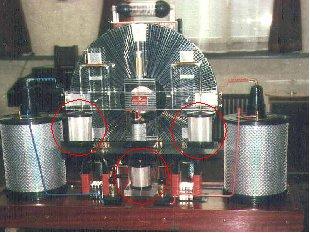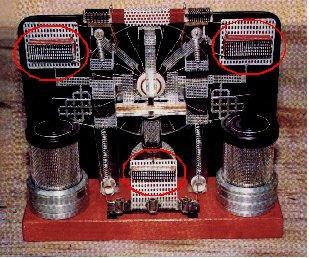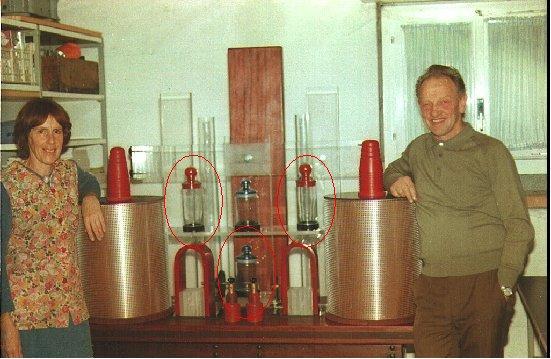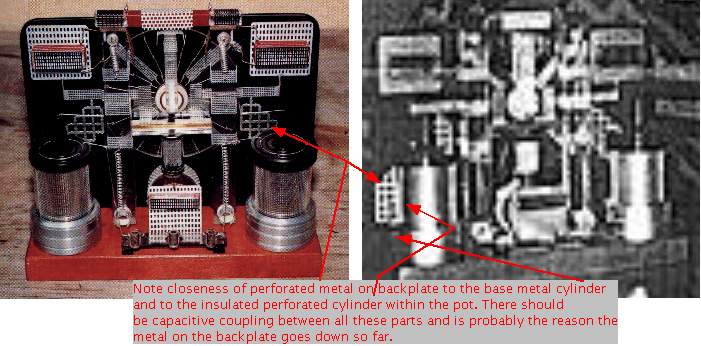This theory for the testatika guesses at the high power output being the result of 3 stages. The stages are as follows:
- The disks act as a variable capacitor, providing AC signals to the various perforated plates that face the disks. They also serve as a fluctuating voltage for the left and right antenna keys so as to pump charge into the large pots. See Testatika as a variable capacitor charge pump for more on this.
- The three smaller pots of the 3kW machine which correspond to the three rectangular blocks of the single disk small machine, may contain mountain crystals which are stimulated to be radioactive in order to added extra charge to the pots. The reason for this is that the disks alone do not put out much charge, if any, so this second stage is used to supply charge. It is possible, though less likely, that a slight amount of ZPE is also being tapped at this point.
- Lastly, the large pots, receiving the pumped charge from stages one and two, tap zero point energy, resulting in a large power output.
The need for the three stages is that the output from the disks alone going into the large pots would either produce no ZPE tapping or too little ZPE tapping to be useful.
The following three photos show the correspondance of the three small pots/blocks for more than one testatika machine.
The third photo below, Luzi Cathomen and unknown machine, shows some irregularly shaped, whitish material forming a cylinder in the center of two of the unfinished small pots. This material may be mountain crystals which under the influence of a fluctuating electric field would be stimulated into giving off beta particles (high energy/moving electrons.) Paul Bauman was asked "if the energy source of the Testatika was radium chloride" and he said no. This was in the "Testatika demonstration with over 30 engineers" report. However, this does not rule out other materials. Also, Stefan Hartmann was told by Stefan Marinov that [Stefan Hartmann's words] "In the small machines the crystals are at the front, where the coils are wound around them and the mesh metals are in front of it and in the big 3KW machine they had mountain crystal stones in the leyden jars at the backside of the machines." See this also in the third photo below. Lastly, when Stefan Hartmann visited Methernitha himself he was told that the secret is in the crystals.
Click on any of the photos below to see the originals.
|
|
|
In the 3kW machine, the output of the two small pots on the shelf go to the center spiral in the big pots. In the single disk small machine, the output of the two small rectangular blocks at the top left/right may go to the rear of the two large pots where the back of the metal outer-cylinder, or bases, contacts the perforated metal sheet that's attached to the back plate. The closeness of the back metal sheet on the back plate could also mean there is a capacitive coupling without even needing the physical contact. The following diagram shows this possibility. Unfortunately there is no side view for this machine.
|
To start the machines, it is well known that you simply rotate the disks a few times. However, since the disks are acting, according to this theory, as a variable capacitor, an initial voltage may be needed. For all the disk type machines either the back disk is black or, in the case of the single disk small machine, the backing is black. This black material may be vinyl, which when rubbed, has a charge. This results in a significantly larger voltage from the variable capacitors as was demonstrated in this dual disk test with a vinyl record for the back disk and in this test with vinyl sheets on the back of the single disk small machine testbed.





